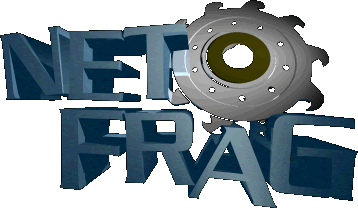- Q: How do I make a separator?
- Q: How do I create a title or a heading?
- Q: Text enclosed in angle brackets like <filename> is not displayed. How can I show it as it is?
- Q: Some words (like WinAPI?) have an unwanted question mark at the end. How can I prevent that?
- Q: How can I write fixed font text?
- Q: Text I enter gets wrapped around. How can I keep the formatting as it is?
- Q: How do I create tables?
- Q: Can I include images and pictures?
- Q: Can I write colored text?
Q: How do I make a separator? You can make a horizontal separator by writing 4 or more dashes at the beginning of a line.
Q: How do I create a title or a heading? The most simple way is to enclose it in '*' Asterisk characters or '_' Underscore charcters. This is an example header enclosed in Asterisk characters This is an example header enclosed in Underscore characters You could use also HTML tags for headings, e.g.
<H4>This is an HTML heading</H4> will show up as:
This is an HTML heading
Q: Text enclosed in angle brackets like <filename> is not displayed. How can I show it as it is? TWiki interprets text as HTML. The '<' and '>' characters are used to define HTML commands. Any valid text within angle brackets gets interpreted by the browser as an HTML command. Invalid text is ignored, that's why it doesn't show up. There are two work arounds if you want to display angle brackets:
- Do an escape sequence in HTML:
- Write
<instead of< - Write
>instead of> - Example: Write
(a > 0)instead of(a > 0)
- Write
- Replace angle brackets with curly brackets.
- Example: Write
{is-writable}instead of<is-writable>
- Example: Write
Q: Some words (like WinAPI?) have an unwanted question mark at the end. How can I prevent that? A question mark after a word is a link to a not yet existing topic. For example, WinAPI? is a valid WikiTopic name in WikiNotation, but the actual topic WinAPI does not exist. If you do not intend to create a topic for a valid TWiki topic name, you can prevent it being linked by putting an HTML tag in front of it. I usually use <NOP>. This is a non existing HTML tag, so a browser just ignores it.
- Example text:
WinAPI as it is, <NOP>WinAPI with preceeding NOP. - Example output:
WinAPI? as it is, WinAPI with preceeding NOP.
Q: How can I write fixed font text? Enclose text in "=" equal signs.
- Example text:
Proportional text, =fixed font text= , proportional again. - Example output:
Proportional text,fixed font text, proportional again.
Q: Text I enter gets wrapped around. How can I keep the formatting as it is? TWiki interprets text as HTML. It is possible to use preformatted text to work around this. Use the preformatted HTML tags to keep the new line of text as it is. Do so by enclosing the text with <PRE> and </PRE> tags, e.g.
This text will keep its format as it is: <PRE> Unit Price Qty Cost ------- ------ --- ------ aaa 12.00 3 36.00 </PRE>It is recommended to use preformatting for tables and source code.
Q: How do I create tables? There are three possibilities:
- Use Wiki rule with "|" vertical bars.
- Use HTML tables with <TABLE>, <TR>, <TD> tags.
- Use preformatted text with <PRE> tags.
- Example text:
| cell A1 | cell B1 | cell C1 |
| cell A2 | cell B2 | cell C2 | - Example output:
cell A1 cell B1 cell C1 cell A2 cell B2 cell C2
<TABLE BORDER=1>
<TR>
<TH> Head A </TH> <TH> Head B </TH>
</TR><TR>
<TD> Cell A2 </TD> <TD> Cell B2 </TD>
</TR><TR>
<TD> Cell A3 </TD> <TD> Cell B3 </TD>
</TR>
</TABLE>
It is displayed as a table like this:
| Head A | Head B |
|---|---|
| Cell A2 | Cell B2 |
| Cell A3 | Cell B3 |
Q: Can I include images and pictures? Yes, this is possible. The easiest way of including images is to attach a GIF or JPG file to a topic and then to include it with text
%ATTACHURL%/myImage.gif . FileAttachment has more.
There are actually two ways of including inline images.
1. Using URL ending in .gif, .jpg, .jpeg
This is a simple and automatic way of including inline images. Simply write the URL of the image file, this will create the inline image for you. Note: The images must be accessible as a URL.
- Example text:
TWiki https://netfrag.org/twiki/pub/wikiHome.gif logo. - Example output:
TWiki logo.
logo.
- Example text:
TWiki <IMG SRC="../../../pub/wikiHome.gif" WIDTH=46 HEIGHT=50> logo. - Example output:
TWiki logo.
logo.
Q: Can I write colored text? Place text you would like to specify a color inside <FONT COLOR="colorCode"> and </FONT> tags. "colorCode" is the hexadecimal RGB color code. The color is composed by specifying the red, green and blue components of the color in hexadecimal notation. For example, to specify white, the red, green and blue components are 255, 255, 255, so you would use "#FFFFFF". Common color codes are:
| Black: | "#000000" | Green: | "#008000" | Silver: | "#C0C0C0" | Lime: | "#00FF00" |
| Gray: | "#808080" | Olive: | "#808000" | White: | "#FFFFFF" | Yellow: | "#FFFF00" |
| Maroon: | "#800000" | Navy: | "#000080" | Red: | "#FF0000" | Blue: | "#0000FF" |
| Purple: | "#800080" | Teal: | "#008080" | Fuchsia: | "#FF00FF" | Aqua: | "#00FFFF" |
- Example text:
<FONT COLOR="#FF0000"> Red color </FONT> draws attention. - Example output:
Red color draws attention.
-- PeterThoeny? - 08 Aug 1999
